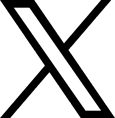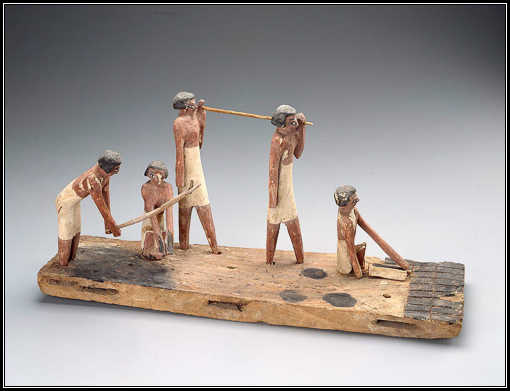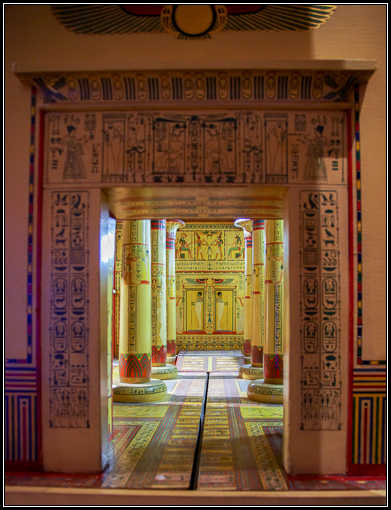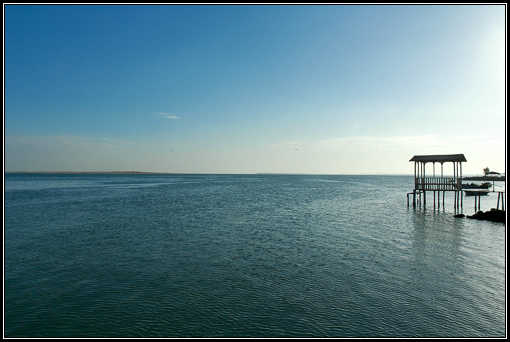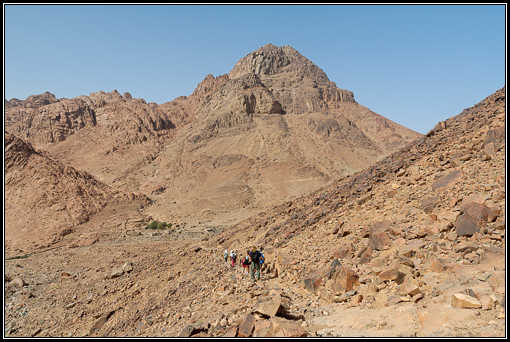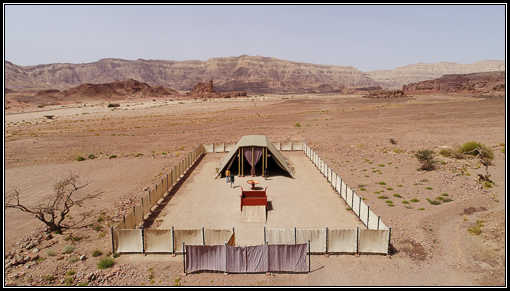Photo Companion
BiblePlaces Newsletter
Vol 23, #4 - September 30, 2024
I love teaching the book of Exodus. Every year I teach through the Old Testament at my university, and one of my favorite weeks is when we’re in Exodus. Later today and again on Wednesday, I will so enjoy helping my students to see the book’s power and beauty, moving from slavery to freedom, from judgment to redemption, from (apparent) divine absence to God dwelling in the midst of his people.
But I also love teaching Exodus because of the photos I show my students. More than any other week in the school year, the Exodus photos are my favorite, as my students witness the Passover sacrifice celebrated in living color. They see photos from my trips to and around Mount Sinai as we talk about God entering into a covenant relationship with his people. And then there’s the tabernacle, with dozens of photos helping them to understand the nature of God’s chosen dwelling place on earth.
Ever since we began developing the Photo Companion to the Bible ten years ago, I have been looking forward to Exodus. We’ve actually been working on the book since 2017, and now it’s finally complete. I’ve never been sure how far we would make it in the Photo Companion series, but I’ve always thought that we could not possibly stop before we finished Exodus. And now we have.
We have created what I believe is the world’s best collection of images to illustrate every chapter of Exodus. And it’s not just the 6,000 photos, but it’s the notes. Detailed descriptions explain what you are looking at. Everything is organized by chapter and book, so you can find what you’re looking for in seconds. The PowerPoint format makes it easy to view on your computer, copy to your own presentations, and share with others.
This week we’re offering the best price–only $69 for DVD+download or download-only. Your support (truly) keeps this project alive, and if you’re able to purchase a second copy to give to a friend, relative, teacher, or pastor, you will bless them and help us. If you are able to share a link with your circle by email or on social media (Facebook, Twitter, Instagram), that would be so appreciated. We want as many lovers of the Bible to know about this resource as possible!
Thank you. My prayer is that God’s people will be strengthened as they better understand and treasure the glories of Exodus.
Todd Bolen
Photographer, BiblePlaces.com
Professor of Biblical Studies, The Master’s University
Exodus
Our new volume in the Photo Companion to the Bible illustrates everything from baby Moses in the Nile River to the ten plagues to Israel’s travels through the wilderness to their arrival at Mount Sinai and construction of the tabernacle. Our goal has been to provide you with whatever photograph will help to explain and illustrate Scripture, with a total of more than 6,200 slides. Some of the highlights include:
- Egyptian reliefs and models illustrating aspects of life in the land, including brickmaking and other hard labor
- Archaeological sites in Egypt and the Sinai Peninsula associated with the Exodus narrative
- Historic photos illustrating tent-dwelling, shepherding, and sacrifices
- Modern photos of the Samaritan celebration of Passover
- Egyptian vessels, jewelry, and other artifacts illustrating Israelite plunder and tabernacle offerings
- Detailed reconstructions of the tabernacle and its altar and furnishings
- Discussion and illustrations of the various materials used in the construction of the tabernacle
- Examples of altars, idols, and implements of worship
- Free download: Exodus 2 (115 slides)
Purchase today to get our best price ($149 $69): DVD+download or download-only
What Others Say...

“This Photo Companion on Exodus is the first place any professor should go when constructing a class related to Exodus. Even though I have thousands of pictures from Egypt and Israel, the pictures in this Photo Companion are so expertly curated that it saved me so much time when teaching through Exodus. Beyond the pictures, the detailed notes to the pictures provide important historical and cultural background. I highly recommend this Photo Companion for any professor or pastor preaching through Exodus! Your students and parishioners will thank you for helping the book come to life in new ways.”
—Charlie Trimm, Associate Professor and Chair of Old Testament, Biola University; co-author of Exodus in the New International Commentary on the Old Testament (under contract)
The Photo Companion to the Bible
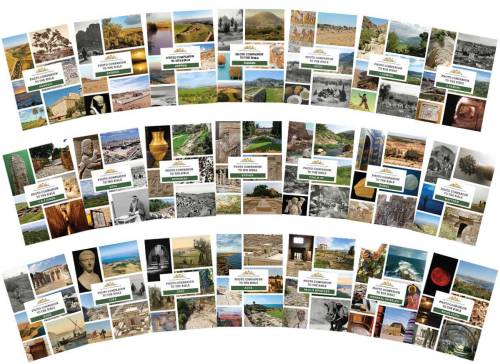
Old Testament (14 volumes): Genesis, Exodus, Joshua, Judges, Ruth, 1 Samuel, 2 Samuel,1 Kings, 2 Kings, Ezra, Nehemiah, Esther, Psalm 23, and Daniel
New Testament (19 volumes): Matthew, Mark, Luke, John, Acts, Romans, 1 Corinthians, 2 Corinthians, Galatians, Ephesians, Philippians, Colossians and Philemon, 1 & 2 Thessalonians, 1 & 2 Timothy, Titus, Hebrews, James, 1 & 2 Peter, Jude, 1, 2, & 3 John, and Revelation
COMPLETE SET (33 volumes): Purchased individually: $1,900;
Set Discount: $599
A Photo Every Day
A Roundup Every Weekend
Every weekend I write about the latest discoveries and stories in archaeology, geography, and tourism related to the biblical world. Visit www.bibleplaces.com/blog to catch up or subscribe by email.

Featured BiblePlaces Photos:
The Book of Exodus
The featured photos this month come from the Exodus volume of the Photo Companion to the Bible, an extensive collection of images illustrating God’s plan of redemption of his people from slavery to make them his own covenant nation.
For more free photos, download the Exodus 2 PowerPoint (115 slides). These and more than 6,200 photos are included in the new Exodus volume in the Photo Companion to the Bible.
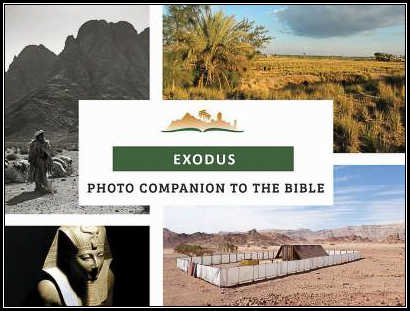
The making of mudbricks was a necessary but arduous task in the construction of Egypt’s cities and monuments. Numerous reliefs and ancient models, like this one photographed in the Boston Museum of Fine Arts, illustrate the process. Initially, the Israelites used hoes to dig up the dry clay soil that would be the base for the bricks. They would then draw water from the river, a pond, or a well, to mix with the soil to create clay. Mudbricks were often made using a wooden mold such as the one held by the man on the right. The mold helped ensure uniform size and speed up the process. The bricks were then sun-dried, unlike in Mesopotamia where kilns were used.
From the beginning, God’s plan was to dwell on earth with men. When Adam and Eve rebelled, the Lord began a plan of redemption that would culminate with the great cry in Revelation, “Now the dwelling of God is with men” (Rev 21:3). Before then, God directed the Israelites to construct a portable dwelling place where he, as their King, would be with them through their travels to the Promised Land.
The book of Exodus records detailed instructions on how to build the tabernacle, down to the furnishings, curtain fabric, and golden hooks. This full-scale model of the tabernacle, located at Timna Park in southern Israel, gives visitors a close-up look at God’s marvelous design. As with the sacrifices and festivals, the Lord taught his people about his character, purposes, and requirements through his dwelling place in their midst.
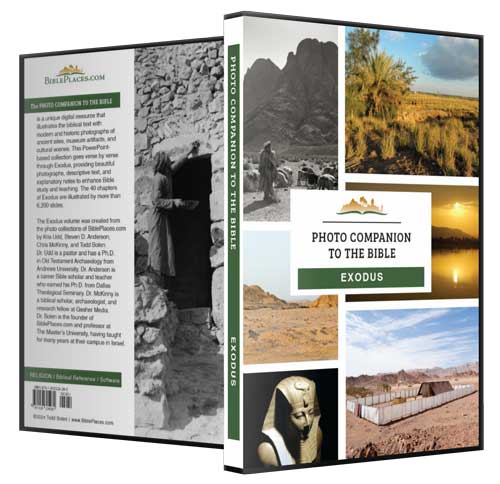
This week you can purchase the Exodus volume at our launch price of $69, including immediate download and free shipping (reg. $149). This unique collection includes more than 6,200 PowerPoint slides illustrating the entire book by chapter and verse. Purchase the collection as a DVD+download or as download-only.
Share This Newsletter
Do you know someone who would enjoy this newsletter? Feel free to pass it on to friends whom you think might appreciate it. They can subscribe here.
The BiblePlaces Newsletter is cost-free and spam-free. Email addresses will never be used for any purpose other than this newsletter. If you have questions about the subscription process, see this page.
All contents © 2024 Todd Bolen. Text and photographs may be used for personal and educational use with attribution. Commercial use requires written permission.


